Review: Google Pixel 2
Oct 26, 2017, 11:15 AM by Eric M. Zeman
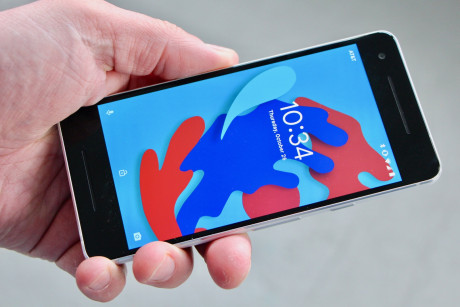
The Google Pixel 2, made by HTC, is a compact smartphone that merges a metal design with a medium-sized screen. Other stand-out features include squeezable sides to call up the Google Assistant and a rapid fingerprint reader. Android 8 Oreo on the Pixel 2 is the purest software experience available on a modern smartphone. Here is Phone Scoop's in-depth look at the smaller Pixel 2.
Is It Your Type?
The Pixel 2 from Google is a high-end handset that includes a powerful camera, a mid-sized screen, a metal design, and a pure Google experience that comes with the promise of speedy software updates. It represents what Google thinks Android is all about. If you want the most Google-y Google phone, the Pixel 2 is it.
Preface
Google releases a new set of Google-branded smartphones each fall. Through 2015, these devices bore the Nexus nameplate, but Google changed things up in 2016 with the Pixel. Nexus or Pixel, the point remains the same: offer Android enthusiasts good hardware to showcase the best of Google's software. This year's Pixel 2 and Pixel 2 XL run the same software, but straddle the currently evolving smartphone form factor. Where the Pixel 2 is slightly smaller and relies on the older 16:9 aspect ratio display, the Pixel 2 XL is larger and moves to the 2:1 (or 18:9 if you prefer) aspect ratio screen that's being adopted by today's most popular flagships. HTC makes the Pixel 2, while LG makes the larger Pixel 2 XL.
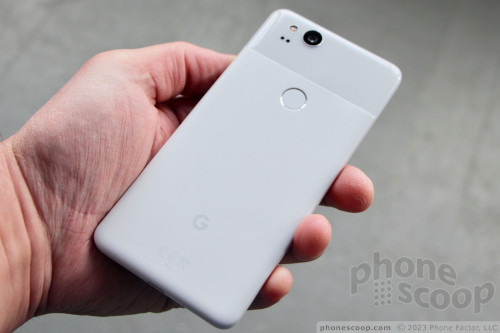
Body
Google's handsets have always embodied a minimalist, modern design. Sometimes it works and sometimes it doesn't. The Pixel 2 is clearly an evolved version of last year's Pixel. It's a compact slab made from metal and glass with an odd glass panel on the rear surface.
To my eyes, this phone's HTC lineage is clear. Put it next to pretty much any Desire series device from HTC and you'll see what I mean. The Pixel 2 is not as curvy as the larger 2 XL. The glass is gently, gently rounded where it fits into the metal frame, which has a nice chamfer to give the phone's face some visual pop. The Pixel 2 has a simple, clean design.
The phone is compact. In fact, thanks to the 5-inch screen, it's one of the smallest phones I've held in recent memory. It's slim and light. Most everyone should be able to hold and use this phone one-handed. It easily fits into pockets and is painless to carry around.
HTC did a fine job manufacturing the phone. The glass and metal pieces are formed perfectly and fit together well. I have no complaints about the materials. I will say this: the metal chassis has a unique paint job that makes it feel less like metal and more like … ceramic.
I can't say I fully understand Google's thinking with respect to the display shape. The Pixel 2 has a 16:9 screen, which means the face is full of bezel. Thick bands frame the top and bottom of the display, and there are also noticeable bezels along the sides. (Possibly to accommodate the squeeze sensors.) The 16:9 display gives the Pixel 2 a dated look compared to the Pixel 2 XL. (Why go with different aspect ratios on these phones? My guess is to appease developers.) Wide slits are carved into the Pixel 2's forehead and chin for the stereo speakers.
The screen lock and volume buttons on the right edge have excellent profiles. Google positioned the screen lock button near the top and put the volume toggle in the middle. I wish this arrangement were reversed. The screen lock button has perfect travel and feedback, but the volume toggle is a bit mushy. The SIM tray is on the left edge of the phone. It's a shame the Pixel 2 doesn't support memory cards.
The USB-C port is on the bottom. There's no headphone jack, a first for a Nexus/Pixel phone. Surely that will bug some people. On the flip slide, the 2 is the first Pixel that's water resistant to 3 feet (for 30 minutes). You win some, you lose some.
The rear panel is about 80% metal and 20% glass. The glass houses the camera module, flash, and sensors, all of which are plainly visible. The camera sticks out a bit from the surface of the glass. It has a chrome rim that calls it out visually. The dual-LED flash also has a chrome rim. The fingerprint reader is located perfectly. It is indented a bit and I had no trouble finding and using it without looking.
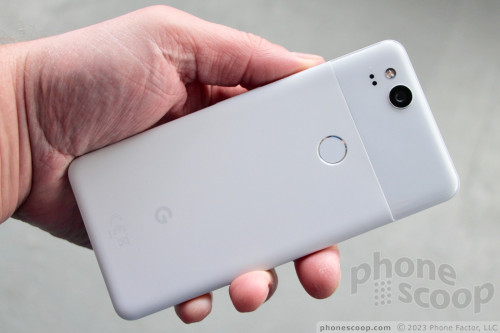
The Pixel 2's chassis is a milled from a single piece of aluminum and thus cannot be opened; the battery is sealed inside.
The Pixel 2 is a fine piece of hardware. It definitely isn't the sexiest thing I've ever seen, but Google devices are more about the software than the hardware. Other than perhaps the too-big bezels, there's nothing about the Pixel 2 that I really dislike.
Screen
The 2's display measures 5 inches across the diagonal and packs full HD (1,920 x 1,080) resolution. It's small. Google could have fit a much larger display into this body, but instead you're looking at the large bezels all around. The newest competing phones of a similar size offer more screen.
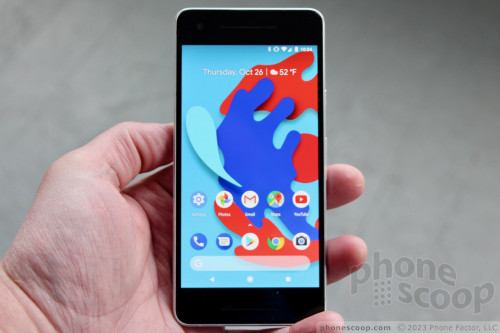
HTC typically uses LCD screens, but Google selected an AMOLED panel for the Pixel 2. I found it to be bright and sharp. I was able to use the Pixel 2 indoors and out with no trouble at all. In fact, the screen was easily visible outdoors even with the brightness set fairly low. Colors are not oversaturated, as they tend to be on most AMOLED panels, and look more natural instead. Sharpness is excellent. On-screen elements are crisp and individual pixels are truly invisible. Viewing angles are just okay. There's an obvious blue shift when you tilt the phone to and fro, though it's not nearly as bad as that of the Pixel 2 XL.
The full HD resolution means the Pixel 2 isn't necessarily ideal for virtual reality, a really curious thing considering that the phone is compatible with Google' Daydream VR platform. Quad HD would be much better for VR.
Signal
Verizon is the only carrier that actually sells the Pixel 2, but the phone is available directly from Google unlocked with support for a generous number of LTE bands. For example, it covers T-Mobile's Band 66, though not Band 71. I tested the Pixel 2 on AT&T and T-Mobile in the metro NYC area and was generally pleased with the results.
The phone maintained a connection to both networks in strong and weak coverage areas alike. I had no trouble connecting calls under poor network conditions. The Pixel 2 held onto a call on AT&T's network during a lengthy highway drive without issue, though the same drive resulted in one dropped call on T-Mobile's network. This is on par with other phones I've tested on the same route.
Data performance was excellent. With support for Cat 15 LTE, the Pixel 2 is one of the quicker devices I've tested in recent months.
Sound
The Pixel 2 is a decent voice phone, though it falls short of being truly good. The earpiece doesn't produce quite enough volume. I had trouble hearing calls in noisy spaces such as coffee shops and city streets, even with the volume all the way up. Clarity ranged from poor to good. Calls on AT&T's network were generally a bit clearer than those on T-Mobile's network, but that's splitting hairs. The earpiece didn't suffer from distortion even at high volumes, but voices had a bit of a robotic sound coming through the speaker. Those I spoke to through the Pixel 2 said I sounded very good.
The speakerphone is very loud and clarity is acceptable. I was able to hear calls in a moving car without much issue. You have to put the volume all the way up, and that introduces a small amount of distortion.
Ringers and alerts are incredibly loud. The vibrate alert did very well.
The phone has stereo speakers and I was pleased with their performance. The bottom speaker delivers a bit more volume than the top one, but it isn't too noticeable when holding the phone sideways. You can fill a small room with sound easily if you care to crank the Pixel 2 all the way up. I enjoyed watching some YouTube videos thanks to the stereo sound.
Battery
The Pixel 2's 2,700 mAh battery provides enough power to get the phone from breakfast to bedtime with just a bit of room to spare. I tested the 2 with all of the radios active and screen brightness set to about 50%. I worked the phone pretty hard. If one app put some hurt on the battery it was the camera, particularly recording video. On days I shot a lot of pictures the phone was more apt to call it quits an hour or two earlier.
The phone includes the basic Android battery-saver tool. The battery saver tones down the processor, brightness, notifications, and such. You can set it to come on automatically when the battery reaches 15% or 5%, or toggle it on manually. It helps a little bit.
The Pixel 2 supports Quick Charge 3.0 and it ships with a high-speed charger. Plug the phone in for as little as 20 minutes and you'll gain several hours of additional uptime. The mostly-metal rear panel precludes the phone from supporting wireless charging.
Bluetooth, GPS, NFC, WiFi
Most everyone will be satisfied with the Pixel 2's secondary radios.
The Pixel 2 is yet another to add support for Bluetooth 5.0. The phone connected to a wide range of accessories. It had no trouble managing Bluetooth headphones for calls or music. Calls made via Bluetooth headsets were acceptable, though far from good. Calls routed to my car's hands-free system were short of impressive, but got the job done. Music sounded very good through Bluetooth headphones and speakers.
The GPS radio was quick and accurate. The Pixel 2 often pegged me within 5 seconds and was accurate to within about 15 feet. The phone was a fine navigation tool, as the fast data performance and GPS accuracy meant it was spot-on when driving from Point A to Point B.
With NFC aboard, you can use the Pixel 2 to make mobile payments via Android Pay. I found it worked well where supported. The NFC radio also helps pairing with some Bluetooth accessories.
The 2's WiFi radio is very good.
Comments
No messages


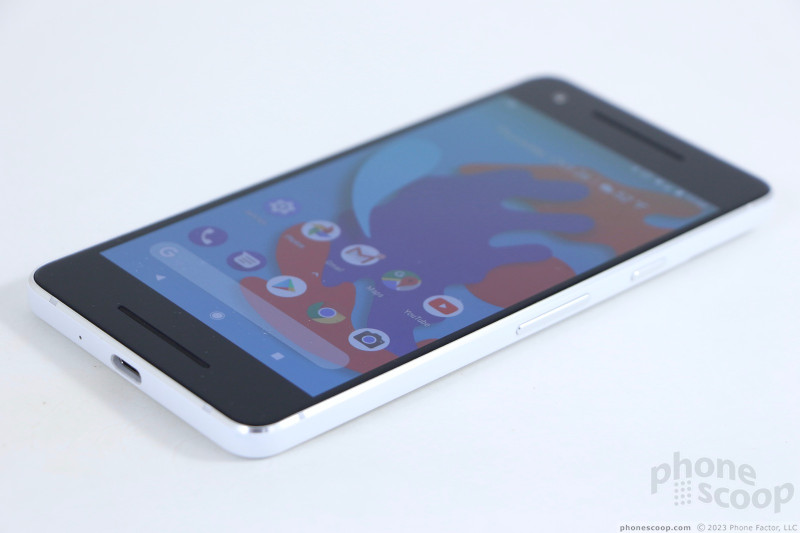
















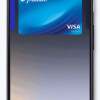 Google Feature Drop Brings New Smarts to Pixels
Google Feature Drop Brings New Smarts to Pixels
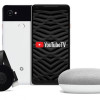 Verizon Running Promo for Half Off Pixel 2 or Galaxy S9
Verizon Running Promo for Half Off Pixel 2 or Galaxy S9
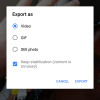 Pixel's Motion Photos Can Now Be Exported as GIFs
Pixel's Motion Photos Can Now Be Exported as GIFs
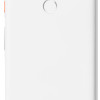 February Security Patch for Pixel 2 Phones Tweaks Performance Across the Board
February Security Patch for Pixel 2 Phones Tweaks Performance Across the Board
 Google Turning On Pixel Visual Core in All Pixel 2 Handsets
Google Turning On Pixel Visual Core in All Pixel 2 Handsets
 Google Pixel 2
Google Pixel 2




